Context:
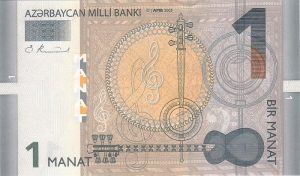 The manat is the currency of the Republic of Azerbaijan, a country in the South Caucasus region of Eurasia. It borders Russia in the north and Iran in the south. Its capital Baku is the largest city on the Caspian Sea. Moreover, Baku is located ~30 meters below sea level, which makes it the lowest lying national capital in the world and also the largest city in the world located below sea level. Baku is one of the oldest and largest cities of the East.
The manat is the currency of the Republic of Azerbaijan, a country in the South Caucasus region of Eurasia. It borders Russia in the north and Iran in the south. Its capital Baku is the largest city on the Caspian Sea. Moreover, Baku is located ~30 meters below sea level, which makes it the lowest lying national capital in the world and also the largest city in the world located below sea level. Baku is one of the oldest and largest cities of the East.
There is no single version regarding the origin of the term “manat”. Official opinion states that the word “manat” is borrowed from the Russian word “moneta”
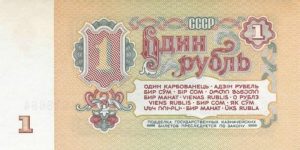 (coin) and pronounced as “manta”. In the USSR, the “manat” was the official name of the Soviet ruble in Azerbaijani, Turkmen and Georgian languages.
(coin) and pronounced as “manta”. In the USSR, the “manat” was the official name of the Soviet ruble in Azerbaijani, Turkmen and Georgian languages.
Both Azerbaijan and Turkmenistan used to be the territories of Scythes (in Indo-Persian context also Saka) and other Indo-European ethno-linguistic tribes (the Persians, Parthians, Medes, etc.). Their languages are now called Iranian, although their ancestors lived in western Siberia and the central Eurasian Steppe (2nd millennium BC) and had nothing to do with Iran. Their so called Proto-Indo-European language is the hypothetical common ancestor of the Indo-European languages, the most widely spoken language family in the world.
Vedic Sanskrit traces its linguistic ancestry back to Proto-Indo-Iranian and Proto-Indo-European languages and is oldest Indo-European language for which substantial written documentation exists. The present form of Vedic Sanskrit can be traced back to the above mentioned 2nd millennium BC. The name “Iran” derives from the Persian and Sanskrit origin word Arya. In Russia there are at least five rivers called Arya. Russia still has a lot of names of rivers and settlements whose names are translated from Sanskrit. See:
- Sanskrit name in Moscow region
- Sanskrit name in Tver region
- Narada and the Urals
- Ganina Yama & Sanskrit
Taken into account the above said, it is worth to check the root of the name of Azerbaijani manat in Sanskrit that was at least 2 000 years the language of a cultural order that exerted influence across Asia (East). In Sanskrit, «manati» means «remember, respect» and «manata» means «proof». The root «mana» means «respect», «idea», «thought», «base», etc. For more details see Manna in Sanskrit.
The manat banknotes and symbol were designed by Robert Kalina in 2006. He gained worldwide fame in 1996 after winning the euro banknote design competition. It was his design that was recognized as the best and was chosen to create the euro. Unlike other 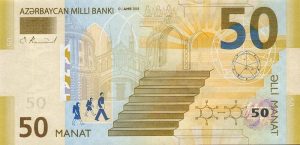 designers who took part in the creation of the Eurocurrency, Robert Kalina offered images of bridges, arches, gates, windows as symbols of the spirit of openness and cooperation in the newly created European Union. His ancestors were descendants of Czechoslovakia, i.e. Slavs. In Russian fairy tales his surname (Kalina) is the name of the bridge that connects the world of the living and the world of the dead. Proud of his famous compatriot, the Austrians call the euro «Kalina«.
designers who took part in the creation of the Eurocurrency, Robert Kalina offered images of bridges, arches, gates, windows as symbols of the spirit of openness and cooperation in the newly created European Union. His ancestors were descendants of Czechoslovakia, i.e. Slavs. In Russian fairy tales his surname (Kalina) is the name of the bridge that connects the world of the living and the world of the dead. Proud of his famous compatriot, the Austrians call the euro «Kalina«.
The deep root of term Kalina might be found in Sanskrit. Kali means “black”. This color means the unclouded state of pure consciousness, the infinity of the Cosmos and the eternity of time. Kali is also the name of one of the most famous and revered goddesses in Hinduism. Kali is the personification of cosmic forces, the goddess of time and transformation. She destroys ignorance and helps to eliminate darkness (in consciousness) and to comprehend the truth. It is believed that in the black color all the differences disappear, it had preceded the Creation. Black is the primeval darkness in which all the secret knowledge of the world is hidden. The word «Kali» is a female gender from «Kala» — one of the names of Shiva meaning: Black, Time, and Fate.
The exact origin of the name of the California is unknown, but in the first letters the name of the Indian goddess Kali is clearly read. California / Kalifornia is the most populous and rich state of the United States. In the past its northern part was element of Russian America founded and managed by the Russian-American company which had direct links with town Veliky Ustyug where the founder of the Russian Romanov Imperial House performed his spiritual deed. Veliky Ustyug has a lot of names around that are translated from Sanskrit. It is located on the confluence of Sanskrit named river Sukhona and Yug.
In the cosmology of the Hinduism the Yuga is a world era, a certain period of the development of the world and of mankind. In Hinduism, Kalki is the ultimate incarnation of Vishnu who will lead the new golden age (Satya Yuga). Kalki should appear at the end of Kali Yuga. It is believed that at the present time there is a transition from Kali Yuga to Satya Yuga, i.e. to the Golden Age or the Age of Aquarius. In astrology, the Aquarius is the heavenly patron of Russia. The only Russian settlement that has the Aquarius is the above mentioned Veliky Ustyug regarded in many ways as the capital of the Age of Aquarius.
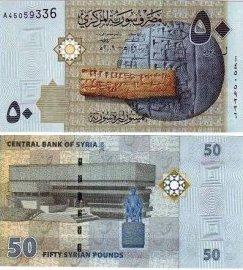 Robert Kalina, commissioned by the Central Bank of Syria, developed in 2010 the design of banknotes of a new sample of Syrian pounds with a face value of 50, 100 and 200 pounds. On the front side of the 50 pound denomination are cuneiform tablets from the city-state of Ebla which is one of the oldest civilizations of Syria. Ebla is located 50 km. south-west of modern Aleppo, one of the oldest continuously inhabited cities in the world. Russian settlement Alepino is located near city of Aleksandrov, the 16th century capital of Russia under the rule of first Russian Tsar Ivan the Terrible.
Robert Kalina, commissioned by the Central Bank of Syria, developed in 2010 the design of banknotes of a new sample of Syrian pounds with a face value of 50, 100 and 200 pounds. On the front side of the 50 pound denomination are cuneiform tablets from the city-state of Ebla which is one of the oldest civilizations of Syria. Ebla is located 50 km. south-west of modern Aleppo, one of the oldest continuously inhabited cities in the world. Russian settlement Alepino is located near city of Aleksandrov, the 16th century capital of Russia under the rule of first Russian Tsar Ivan the Terrible.
Near Aleksandrov is also another settlement with ancient name called Arsaki. As it is said above the Sakas is a another name for the Scythes. Arsak I (3rd century BC) was the the founder of the Arsacid dynasty of Parthia. After him all over 30 monarchs of the Arsacid empire officially named themselves. Under the leadership of the Arsacids, the Parthians created a powerful empire from Mesopotamia to India. Iran was its core. The Parthians were Scythes and had connection with Azov Sea (see below). It is believed that Arsak (Ashk) has also given name to the city of Ashkabad, former As-habad whose name is also associated with aesir, who were a tribe of gods (led by Odin) from the Norse mythology. In Sanskrit, «sir» means «head». The Norse mythology states that Odin and his great army of aesir had home in Asia («Asaland») that was called Asgard. In the Old Norse, aesir is plural. Single male was god from this tribe was called an ass, but in the meaning diametrically opposite to the anatomy informal term in North American English.
Norwegian adventurer and ethnographer Thor Heyerdahl has stated that the home of Odin (his Asgard) was near Russian city of Azov and the coast of the Sea of Azov. This ancient city Tanais is located in the delta of the River Don. He initiated 2001 — 2002 excavations there. It is at the northeast of the Black Sea.
Previously Thor Heyerdahl made four visits to Azerbaijan in 1981, 1994, 1999 and 2000. He was convinced that the geographic location of the mythic Asgard (Aser or Æsir) matched the region of contemporary Azerbaijan (southeast the Black Sea). Heyerdahl was convinced that Norwegians and other Scandinavians could trace their roots from modern Azerbaijan. In 2000 Thor Heyerdahl visited Kish village of Azerbaijan, some 240 km. northwest of its capital Baku. He attended archaeological excavations in the church of Saint Elishe in the village. Today, a bust of Heyerdahl is in front of this church.
It is worth pointing that the name of the above mentioned Azerbaijani village Kish is very old and symbolic. Kish (modern Shahrisabz in Uzbekistan) was once a major city of Central Asia and the cradle of Samarkand ruler Timur (ending is UR) also known as Tamerlane (The One Who Knows Merlin). On the seal of Tamerlane was sign of Shambala. Tamerlane (1336 — 1405) never lost a single battle. His descendants were the Great Moguls of India. Kashi is the old name of holy Indian city Varanasi.
Heyerdahl’s theory of Odin was accepted as fact by the Evangelical Lutheran Church of Norway. Despite the fact that most of his works caused controversy in the scientific community, Heyerdahl raised public interest in ancient history and the achievements of various cultures and peoples throughout the world. He had the same name as the hammer-wielding god of thunder and lightning Thor from the Norse mythology, the protector of mankind and of the fortress of Asgard. Thor was the son of Odin All-Father.
Elba is a national park and the same mountain in the south of Egypt.
Elba or Laba is the famous river (1165 km.) flowing through the territory of the Czech Republic and Germany.
Elba is a Mediterranean island in the Italian region of Tuscany, the site of the first reference of the «invincible» Napoleon who suffered a crushing defeat in Russia. Tuscany was the home of the Etruscans who created the first major civilization in this region in the 8th century BC and later taught the Romans and formed their upper class. Tuscany was also the birthplace of the Renaissance began here in Florence in the 14th century. In 15th century in Tuscan (Etruscan) city Sienna was created the oldest surviving bank in the world (Banca Monte dei Paschi di Siena). This bank is said to have close ties with the Vatican. It actively financed colonial expeditions of Spain the Americas. Italian explorer and colonizer Christopher Columbus completed four voyages across the Atlantic Ocean under the auspices of the Catholic Monarchs of Spain (Queen Isabella I of Castile and King Ferdinand II of Aragon).
Ebola («white water») is a river in the northern part of the Democratic Republic of the Congo (formerly Zaire) the right tributary of the River Dva (the Congo River basin). This country is the second largest country in terms of area and the fourth largest country in Africa. Its capital, Kinshasa is the second most populous city in Black Africa (after the Nigerian Lagos) and the second-largest French-speaking city in the world (after Paris). According to the Guinness Book of Records, the largest (163 kg.) and the tallest (1.95 m.) primates (gorillas) have been found in the territory of the present Democratic Republic of the Congo. The name of the famous King Kong is connected with this country and its capital. Kinshasa is twinned with the Turkish capital Ankara (like Turkmenistan’s capital Ashgabat) and is twinned with the Iranian capital Tehran.
Modern Azerbaijan is the heir of many dynasties and ancient states. Azerbaijani historians especially emphasize the kingdom of 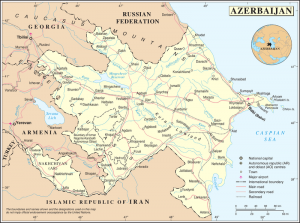 Manna. The first record (i.e. traceable history) about Manna goes back to the middle of the 9th century BCE. Manna was formed on the territory of contemporary northern Iran, but its territory also included the lands of Nakhchivan (southwest part of the Republic of Azerbaijan, bordering Armenia). Nakhchivan is remarkable for its story about the last of the pre-Flood Patriarchs Noah. It is believed that the Noah’s ark after the Flood settled on Mount Ararat (today Turkey), from which Noah descended to the Ararat valley to the Nakhichevan area, which is translated as “the place where Noah descended”. Thus, Manna is considered the first state formation on the territory of present-day Azerbaijan. This traceable history of Azerbaijan is confirmed by written sources.
Manna. The first record (i.e. traceable history) about Manna goes back to the middle of the 9th century BCE. Manna was formed on the territory of contemporary northern Iran, but its territory also included the lands of Nakhchivan (southwest part of the Republic of Azerbaijan, bordering Armenia). Nakhchivan is remarkable for its story about the last of the pre-Flood Patriarchs Noah. It is believed that the Noah’s ark after the Flood settled on Mount Ararat (today Turkey), from which Noah descended to the Ararat valley to the Nakhichevan area, which is translated as “the place where Noah descended”. Thus, Manna is considered the first state formation on the territory of present-day Azerbaijan. This traceable history of Azerbaijan is confirmed by written sources.
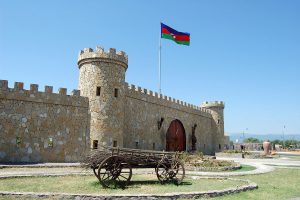 Azerbaijan is a vital part of the South Caucasus or Transcaucasia (modern Georgia, Armenia, and Azerbaijan). Various peoples, including Scythians, Alani, Huns, Khazars, Arabs, Seljuq Turks, and Mongols have been / settled in the South Caucasus throughout its history, known from the 3rd and 2nd millennia BCE. Nevertheless, genetic testing has revealed common genetic markers that support an autochthonous background for most Azeris.
Azerbaijan is a vital part of the South Caucasus or Transcaucasia (modern Georgia, Armenia, and Azerbaijan). Various peoples, including Scythians, Alani, Huns, Khazars, Arabs, Seljuq Turks, and Mongols have been / settled in the South Caucasus throughout its history, known from the 3rd and 2nd millennia BCE. Nevertheless, genetic testing has revealed common genetic markers that support an autochthonous background for most Azeris.
Among the most unique autochthonous peoples of Azerbaijan is a Caucasian group called Udin (Utti). It is one of the most ancient peoples of the Caucasus. The historical place of their residence and both capitals is the territory of modern Azerbaijan. The ancestors of the Udins belonged to the multi-tribal state association named Caucasian Albania (the endonym is unknown) existed from 2nd century BCE to 8th century AD. The Caucasian Albanians along with the Georgians and Armenians formed one of the three nations of the Southern Caucasus around in 2nd century BCE. The Caucasian Albania came under strong Armenian religious and cultural influence. It was incorporated in the Median / Achaemenid empires. After the rise of the Parthian Empire (a major political and cultural power in ancient Iran and Iraq) the kings of Caucasian Albania were replaced with an Arsacid family. The Udins’ religion is Christianity. They adopted it from the Armenia that became in the year 301 the first Christian state in the world. In the Byzantine (Eastern Roman) Empire Christianity became the state religion only after 380. Interestingly, Albany is the capital of the U.S. state of New York, where is located world famous Manhattan.
The Caucasian Albania’s capital during antiquity was Kabala. The origin of this name is unclear so as its connection to the 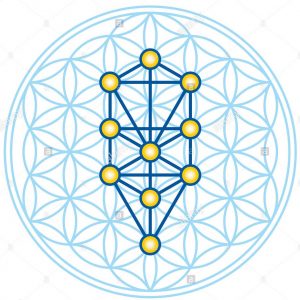 Kabbala, a set of esoteric teachings. In kabbalistic thought and the kabbalistic perspective on health, balance means a coming into order and integration. The above mentioned ancient city of Kabala is located in the middle of the 2500-year-old Silk Road (from Central Asia to Europe). The commercial ties of Kabala were vast.
Kabbala, a set of esoteric teachings. In kabbalistic thought and the kabbalistic perspective on health, balance means a coming into order and integration. The above mentioned ancient city of Kabala is located in the middle of the 2500-year-old Silk Road (from Central Asia to Europe). The commercial ties of Kabala were vast.
Kabala experienced frequent raids by the Khazars. The Khazars owned the Kabala for a century and turned the city into its administrative center. It is no coincidence that the Arabs who later captured Kabala called the city of Kabala-Khazar. The Khazars Kaganate existed from 7th to 10th centuries. The Khazars were a semi-nomadic Turk people, who built multicultural and multiconfessional empire successfully competing with the Christian Byzantine Empire and the Muslim Arab Halifat, as well as the empire of Charlemagne which became the basis of the European Union. These four empires were the major powers (super states) of that time. The ruling elite of Khazars are believed to have adopted Judaism, although the archaeological evidence for this conversion remains elusive. Anyway it is a unique conversion to Judaism by steppe tribes. Their choice of this monotheistic religion was partly reconditioned since they fought with the Christians and the Muslims. The only universal religion left for them was Judaism.
Another peculiar historical fact is that around 70 km. northeast of Kabala is city of Cuba that is home to the Azerbaijan’s largest community of Mountain Jews (or Caucasus Jews) and one of the largest Jewish populations in the former Soviet Union. The Mountain Jews are the descendants of Persian Jews from Iran. Many of them are today among the richest people of Russia. Cuba / Kuban is an ancient name.
The Caspian Sea in Azerbaijani language is still called Khazar Sea. The biggest city on the Caspian / Khazar Sea is Baku, the capital of Azerbaijan. This sea is the largest closed reservoir on Earth. Russia owns 695 km of the Caspian coast, Iran – 724 km. The largest river of the Caspian basin is the Russian Volga, providing about 80% of the river water flowing into the sea. The name Volga is translated from Sanskrit.
biggest city on the Caspian / Khazar Sea is Baku, the capital of Azerbaijan. This sea is the largest closed reservoir on Earth. Russia owns 695 km of the Caspian coast, Iran – 724 km. The largest river of the Caspian basin is the Russian Volga, providing about 80% of the river water flowing into the sea. The name Volga is translated from Sanskrit.
Udina is the name of two Russian rivers: one belongs to the Volga basin and the Caspian Sea, the other belongs to the Baltic Sea basin. The biggest number of the Udins live in the Rostov region of Russia. Its capital Rostov-on-Don is located less than 30 km. west of ancient Tanais that the above mentioned Thor Heyerdahl has identified as the Asgard, the dwelling place of Old Norse gods. According to Norse mythology, in Asgard is located enormous majestic hall Valhalla, ruled over by the god Odin. The legendary Buddhist country Uddyana identified as the Shambala. The ancient Indian city of Ujjain is among four holy cities where are held the Kumbh Melas, the greatest religious fairs in the world. See Uddyana & Udina.
